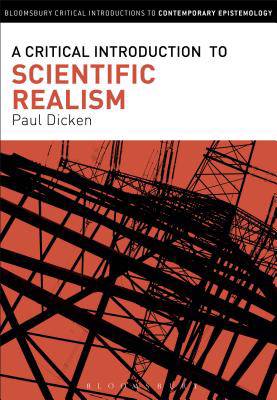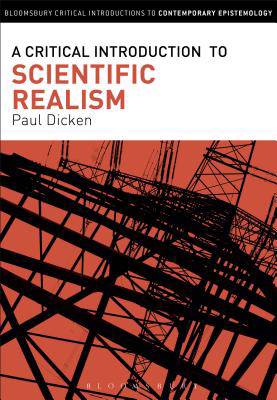
Je cadeautjes zeker op tijd in huis hebben voor de feestdagen? Kom langs in onze winkels en vind het perfecte geschenk!
- Afhalen na 1 uur in een winkel met voorraad
- Gratis thuislevering in België vanaf € 30
- Ruim aanbod met 7 miljoen producten
Je cadeautjes zeker op tijd in huis hebben voor de feestdagen? Kom langs in onze winkels en vind het perfecte geschenk!
- Afhalen na 1 uur in een winkel met voorraad
- Gratis thuislevering in België vanaf € 30
- Ruim aanbod met 7 miljoen producten
Zoeken
Omschrijving
What are the reasons for believing scientific theories to be true? The contemporary debate around scientific realism exposes questions about the very nature of scientific knowledge. A Critical Introduction to Scientific Realism explores and advances the main topics of the debate, allowing epistemologists to make new connections with the philosophy of science.
Moving from its origins in logical positivism to some of the most recent issues discussed in the literature, this critical introduction covers the no-miracles argument, the pessimistic meta-induction and structural realism. Placing arguments in their historical context, Paul Dicken approaches scientific realism debate as a particular instance of our more general epistemological investigations. The recurrent theme is that the scientific realism debate is in fact a pseudo-philosophical question.
Concerned with the methodology of the scientific realism debate, Dicken asks what it means to offer an epistemological assessment of our scientific practices. Taking those practices as a guide to our epistemological reflections, A Critical Introduction to Scientific Realism fills a gap in current introductory texts and presents a fresh approach to understanding a crucial debate.
Moving from its origins in logical positivism to some of the most recent issues discussed in the literature, this critical introduction covers the no-miracles argument, the pessimistic meta-induction and structural realism. Placing arguments in their historical context, Paul Dicken approaches scientific realism debate as a particular instance of our more general epistemological investigations. The recurrent theme is that the scientific realism debate is in fact a pseudo-philosophical question.
Concerned with the methodology of the scientific realism debate, Dicken asks what it means to offer an epistemological assessment of our scientific practices. Taking those practices as a guide to our epistemological reflections, A Critical Introduction to Scientific Realism fills a gap in current introductory texts and presents a fresh approach to understanding a crucial debate.
Specificaties
Betrokkenen
- Auteur(s):
- Uitgeverij:
Inhoud
- Aantal bladzijden:
- 224
- Taal:
- Engels
- Reeks:
Eigenschappen
- Productcode (EAN):
- 9781472575906
- Verschijningsdatum:
- 28/07/2016
- Uitvoering:
- Paperback
- Formaat:
- Trade paperback (VS)
- Afmetingen:
- 157 mm x 234 mm
- Gewicht:
- 408 g

Alleen bij Standaard Boekhandel
+ 162 punten op je klantenkaart van Standaard Boekhandel
Beoordelingen
We publiceren alleen reviews die voldoen aan de voorwaarden voor reviews. Bekijk onze voorwaarden voor reviews.









